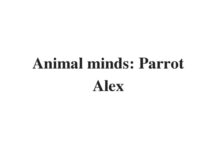Table of Contents
TV Addiction 2
Passage

A. Excessive cravings do not necessarily involve physical substances. Gambling can become compulsive; sex can become obsessive. One activity, however, stands out for its prominence and ubiquity—the world’s most popular pastime, television. Most people admit to having a love-bate relationship with it. They complain about the “boob tube” and “couch potatoes,” then they settle into their sofas and grab the remote control. Parents commonly fret about their children’s viewing (if not their own). Even researchers who study TV for a living marvel at the medium’s hold on them personally. Percy Tannenbaum of the University of California at Berkeley has written: “Among life’s more embarrassing moments have been countless occasions when I am engaged in conversation in a room while a TV set is on, and I cannot for the life of me stop from periodically glancing over to the screen. This occurs not only during dull conversations but during reasonably interesting ones just as well.”
B. Scientists have been studying the effects of television for decades, generally focusing on whether watching violence on TV correlates with being violent in real life. Less attention has been paid to the basic allure of the small screen—the medium, as opposed to the message.
C. The term “TV addiction” is imprecise and laden with value judgments, but it captures the essence of a very real phenomenon. Psychologists and psychiatrists formally define substance dependence as a disorder characterized by criteria that include spending a great deal of time using the substance; using it more often than one intends; thinking about reducing use or making repeated unsuccessful efforts to reduce use; giving up important social, family or occupational activities to use it; and reporting withdrawal symptoms when one stops using it.
D. All these criteria can apply to people who watch a lot of television. That does not mean that watching television, in itself, is problematic. Television can teach and amuse; it can reach aesthetic heights; it can provide much needed distraction and escape. The difficulty arises when people strongly sense that they ought not to watch as much as they do and yet find themselves strangely unable to reduce their viewing. Some knowledge of how the medium exerts its pull may help heavy viewers gain better control over their lives.

E. The amount of time people spend watching television is astonishing. On average, individuals in the industrialized world devote three hours a day to the pursuit—fully half of their leisure time, and more than on any single activity save work and sleep. At this rate, someone who lives to 75 would spend nine years in front of the tube. To some commentators, this devotion means simply that people enjoy TV and make a conscious decision to watch it. But if that is the whole story, why do so many people experience misgivings about how much they view? In Gallup polls in 1992 and 1999, two out of five adult respondents and seven out of 10 teenagers said they spent too much time watching TV. Other surveys have consistently shown that roughly 10 percent of adults call themselves TV addicts.
F. What is it about TV that has such a hold on US? In part, the attraction seems to spring from our biological ‘orienting response.’ First described by Ivan Pavlov in 1927, the orienting response is our instinctive visual or auditory reaction to any sudden or novel stimulus. It is part of our evolutionary heritage, a built- in sensitivity to movement and potential predatory threats.
G. In 1986 Byron Reeves of Stanford University, Esther Thorson of the University of Missouri and their colleagues began to study whether the simple formal features of television-cuts, edits, zooms, pans, sudden noises—activate the orienting response, thereby keeping attention on the screen. By watching how brain waves were affected by formal features, the researchers concluded that these stylistic tricks can indeed trigger involuntary responses and ‘derive their attention-al value through the evolutionary significance of detecting movement…. It is the form, not the content, of television that is unique.’
H. The orienting response may partly explain common viewer remarks such as: “If a television is on, I just can’t keep my eyes off it,” “I don’t want to watch as much as I do, but I can’t help it,” and “I feel hypnotized when I watch television.” In the years since Reeves and Thorson published then pioneering work, researchers have delved deeper. Annie Lang’s research team at Indiana University has shown that heart rate decreases for four to six seconds after an orienting stimulus. In ads, action sequences and music videos, formal features frequently come at a rate of one per second, thus activating the orienting response continuously.
I. Lang and her colleagues have also investigated whether formal features affect people’s memory of what they have seen. In one of their studies, participants watched a program and then filled out a score sheet. Increasing the frequency of edits (defined here as a change from one camera angle to another in the same visual scene) improved memory recognition, presumably because it focused attention on the screen. Increasing the frequency of cuts—changes to a new visual scene-had a similar effect but only up to a point. If the number of cuts exceeded 10 in two minutes, recognition dropped off sharply.
J. Producers of educational television for children have found that formal features can help learning. But increasing the rate of cuts and edits eventually overloads the brain. Music videos and commercials that use rapid intercutting of unrelated scenes are designed to hold attention more than they are to convey information. People may remember the name of the product or band, but the details of the ad itself float in one ear and out the other. The orienting response is overworked. Viewers still attend to the screen, but they feel tired and worn out, with little compensating psychological reward. Our ESM findings show much the same thing.
K. Sometimes the memory of the product is very subtle. Many ads today are deliberately oblique: they have an engaging story line, but it is hard to tell what they are trying to sell. Afterward you may not remember the product consciously. Yet advertisers believe that if they have gotten your attention, when you later go to the store you will feel better or more comfortable with a given product because you have a vague recollection of having heard of it.
Questions
You should spend about 20 minutes on question 27-40, which are based on reading passage 3 on the following pages.
Questions 27-30
Do the following statements agree with the claims of the writer in Reading Passage?
In boxes 27-30 on your answer sheet, write
YES if the statement is true
NO if the statement is false
NOT GIVEN if the formation is not given to the passage
27. Even researcher find sometimes it is more interesting in watching TV than talking with others in personal experience
28. Information medium as TV has always been the priority for scientific research.
29. It is partially unscientific to use the term ‘TV addiction’. 30. Children do not know why they exercise too little.
Questions 31-33
Choose THREE letters, A-F.
Write the correct letters in boxes 31-33 on your answer sheet.
Which THREE of the following are benefits of watching TV?
1. artistic inspiration
2. family reunion
3. relieve stress
4. learn knowledge and education
5. work efficiency
6. ease communicative conflict
Questions 34-37
Look at the following researchers (Questions 34-37) and the list of statements below. Match each researcher with the correct statements.
Write the correct letter A-G in boxes 34-37 on your answer sheets.
34 Percy Tannenbaum
35 Ivan Pavlov
36 Byron Reeves and Esther Thorson
37 Annie Lang
List of Statements
A. It is the specific media formal characteristic that counts.
B. TV distraction shows human physical reaction to a new and prompted stimulus
C. Conveying information is the most important thing.
D. It is hard to ignore the effects of TV.
E. Whether people can remember deeper of the content relates with the format.
F. The heart rate remains stable when watching.
G. Clinically reliance on TV does not meet the criteria of an addiction.
Questions 38-40
Complete the following summary of the paragraphs of Reading Passage 3, using NO MORE THAN TWO WORDS from the Reading Passage for each answer.
Write your answers in boxes 38-40 on your answer sheet
TV is becoming a worldwide 38……….. Some people love it and spend a great deal of time watching it. According to some surveys, a small group even claim themselves as 39………… One researcher believes that this attraction comes from our human instinct, described as 40………which is built in part of our physiological evolution.
Answers



